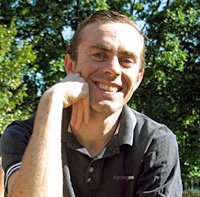The 2011 British Best All-Rounder aka the BBAR is now over including the shouting (I hope). And yep, I kept my position in the top slot, finishing with an average of 28.02mph. Second was Julian Jenkinson with 27.78, then Derek Parkinson (27.72), Andy Bason (27.71 - so close to third), Nik Bowdler (27.49) and Scott Povey (27.21). Not much in it!
This is the best thing I've won in cycling - and that includes five journo world titles. In fact one of the reasons I didn't go to Italy to defend that jersey was because I was fully focused on the BBAR. Focus can get you a long way in life.
The BBAR with its 80+ year history is almost anachronistic in modern day sport. How can it be 'all round' when the shortest distance is 50 miles? That's one of the criticisms levelled at it. But if the BBAR was widened to include 10 and 25 miles, you'd still find the same guys at the top. It's just a matter of what you focus on during the season.
Another criticism is that you can get lucky with the conditions and doing a fast ride while others miss out. This certainly happened this year: Andy Bason missed the BDCA 50 and opted not to ride the BDCA 100 or the Breckland 12, all of which were fast. But I missed the national 100 (which was fast and I wanted to do), the EDCA 100 (quick), the Shaftesbury 50 (where Jenkinson did his best 50) and the Yorkshire 50 (where Bason did his best 50). In fact the only time I met Bason in a BBAR event was the national 50, where I beat him by 22sec.
When you look at the overall results, some luck does come into it for sure, as well as some planning. And the fact that it was so close this year shows that it's remarkably resilient to conditions and course variation.
It has a huge amount of respect among time triallists. That's been clear at every event I've been to since I did my 50 and 12hr. I can see why. Apart from its history, its distances are pretty formidable. Mine this year totalled over 455 miles/732km in just three events. All alone against the clock.
Also despite the challenge it remains almost purely an amateur competition. Most pros don't do TTs longer than an hour as their focus is on road racing. If they did the BBAR, well it'd be scary. But that's not what they're paid to do.
The other thing I managed to do this year was finish 2nd in the Rudy Project national TT series again. My points total was 294 out of a possible 300, 5 more than last year but not enough to threaten Matt Bottrill, who won it again with 299 points.
Funnily enough the only guy to beat Matt was Sigma Sport pro Wouter Sybrandy, who I came up against in my final round last weekend (Bottrill DNS). It was extremely hot for October here (29 degrees!) and as always in the heat my power took a battering - I was a good 25W off my best. I'm sure everyone else was down too, as the results order didn't change much. Sybrandy did win but only beat me by 42 seconds over 29.2 miles, so that was a nice way to finish off the season.
Some drinking ensued.
It wasn't quite over for me though. I set myself an appointment with the turbo trainer on day for a maximal aerobic power test (see Ric Stern's article on Cyclingnews for a full explanation of the MAP test). This test is a VO2max style effort, where you gradually ramp up the power until you fail. There are a few different protocols but the one I used last year and this year was a 25W/minute ramp (5W/12sec) taking the power over the final minute as MAP. A better protocol for me would be 20W/minute, as it's more appropriate for fitter riders, but I'll do that next time.
As you can imagine, it's a fairly demanding test. It's quite hard to control the power ramp as the time ticks over and you're gradually going crosseyed with oxygen debt. However, it can be done.
Now, I didn't think MAP was that trainable once you've been racing for a few years, let alone 20 years. It's correlated with your VO2max, which is meant to peak after just 18 months of training then decline once you pass 25 years of age. Sounds grim.
I do know that you can train all levels underneath it to maximise the percentage of MAP that you can ride at for a given duration. If you scroll to the bottom of the Ric's article, you can see the percentage ranges for various durations. e.g. for 10 miles it's 75-81% of MAP, which is a good 25W of trainability if your MAP is 400W.
So I was pleasantly surprised to find out after doing the test that my MAP has increased by 31W this year. That's quite a lot. I've done a few tests over the years and this is by far the highest, both in absolute and power/weight terms. Or to put it another way, I'm currently fitter than I have ever been, despite being well into physical decline at age 40. Maybe there is something to the maxim, "you're only as old as you feel."
I think there's a lot of scope for improvement next year, in terms of both maximising percentage of MAP at various durations and lifting MAP itself.
Now it's time for a holiday.
The human body is amazing
Monday, September 26, 2011
Subscribe to:
Post Comments (Atom)

No comments:
Post a Comment